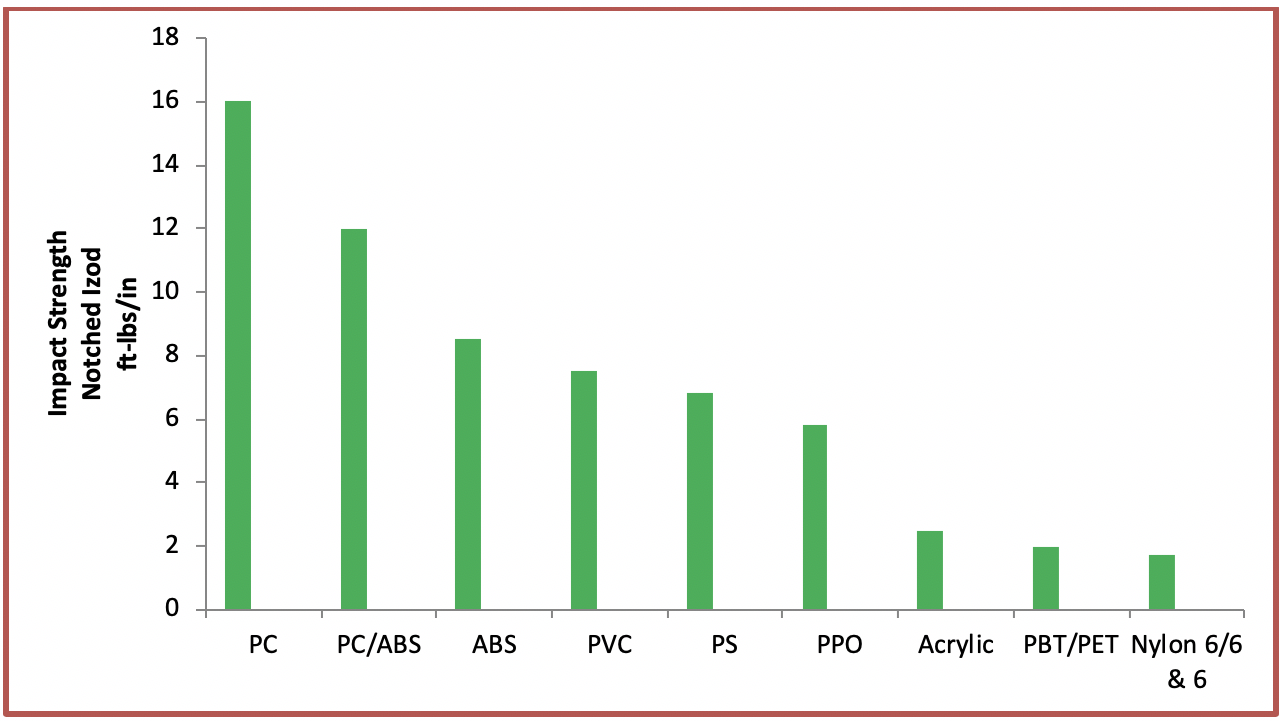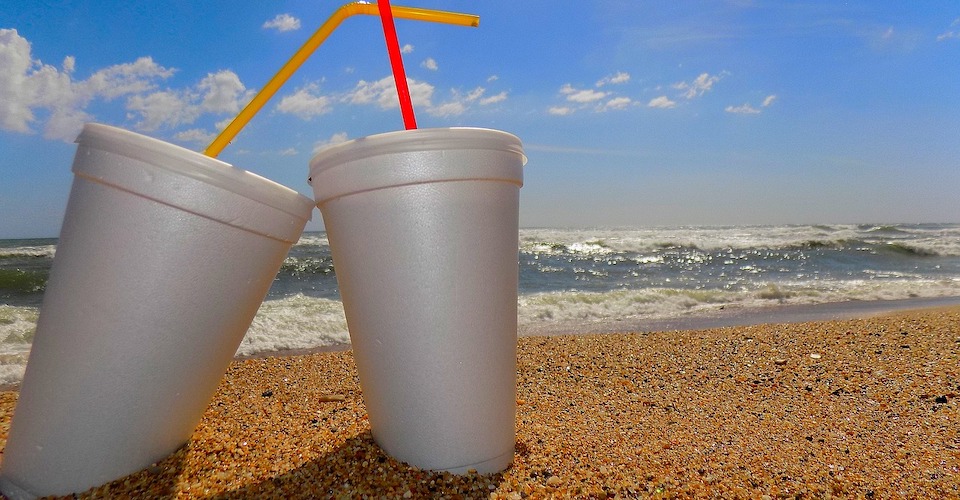All About Polystyrene (PS) Plastic
Polystyrene or “PS” is a thermoplastic polymer that is naturally transparent. Interestingly, there are certain types of Polystyrene that could be classified as a thermoset polymer as well. It depends on how the material is prepared. The most well-known use of Polystyrene is foam and packaging. Polystyrene is not very expensive, is readily available, and it glues well. It can also be cut and painted as it comes in white color. Sometimes, prototypes are made using polystyrene foam. These prototypes are not high-quality detailed prototypes but rather quick and rough versions.

Polystyrene can be easily thermoformed and it also has a certain degree of bend-ability. Hence, it is sometimes used as a living hinge. Polystyrene also has good X-ray resistance, low shrinkage, it is rigid, and it does not have any taste or smell. Being a thermoplastic material, it has a melting point of 240oC. It can be heated to that temperature, cooled, and then reheated again without any significant degradation. The ability of polycarbonate to liquefy at 240oC makes it a good fit for injection molding.
History of Polystyrene
The earliest record of polystyrene’s discovery dates way back to 1839. Eduard Simon had created a monomer called Styrol when he was working in Berlin. Then in 1845, a Jamaican chemist named Buddle Blyth created styrol via a different process and called the material as metastyrol. Then in 1866, a French chemist by the name of Marcelin Berthelot correctly identified the formation of styrol via the polymerization process.
Then in 1931, German company IG Farben started manufacturing polystyrene. It had started doing so in order to find a replacement for die-cast zinc. The Polystyrene produced by IG Farben was in pellet form and it used a reactor vessel to produce the pellets. After all of this, the Americans entered. In 1941, Dow Chemical made the world’s first styrofoam. After that, many other companies created different products using different variants of Polystyrene and it became very popular thereafter.
Today, the global demand for polycarbonate exceeds 18 million tons valued at over USD 32 billion.
Manufacturing of Polystyrene
Polystyrene is made via distillation of hydrocarbon fuels which results in the formation of lighter groups called fractions. These fractions are then combined with catalysts to allow a chemical reaction. The result of this reaction is the creation of the plastic that is known as polystyrene. The entire process is considered to be a polymerization process.
The polymerization process is generally of three types: bulk polymerization, suspension polymerization, and solution polymerization. The solution polymerization process results in lower residual monomer content and a higher purity of polymers. The suspension polymerization method allows for polymers of different molecular weights to be produced. Hence, it is the method of choice to make crystal grades and high impact grades of polystyrene. Bulk polymerization is great when good clarity of material and a high-quality of colored resin is needed.
Polystyrene foam is produced by blowing agents into the plastic, which expand and form a foam, which basically consists of trapped air.
Different forms of Polystyrene
Polystyrene is available in different forms depending upon the application where it is to be used. The method of preparation for each type of polystyrene is different. The most commonly used polystyrene forms are:
- Molded/Sheet Polystyrene – This type of polystyrene is made using thermoforming or injection molding. Things like CD cases, license plate frames, disposable cutlery, Petri dishes, etc. are made using molded polystyrene.
- Foam – As mentioned above, polystyrene as a foam is one of the most popular applications of the material. It is made by blowing special agents and foam is actually 95% to 98% air. These foams are good thermal insulators and are used in the construction of homes and buildings. They are also used in packaging.
- Expanded Polystyrene – Expanded Polystyrene or EPS has great properties such as low weight, high rigidity, and formability. Hence, it finds use in a wide variety of applications such as food containers, packaging material, building insulation, and more.
Applications of Polystyrene
Automotive: Polystyrene is used to make knobs, energy absorbing panels of doors, sound reducing foam, panels of certain instruments, and in making special types of seats like child seats.
Appliances: Polystyrene is used to make housing parts and other parts of everyday appliances. Temperature-dependent appliances like refrigerators, microwaves, ovens, etc use polystyrene because of its thermal insulating properties. It is also used in vacuum cleaners and blenders because it is inert and does not react with other materials.
Electronics: The rigid and hard type of polystyrene is used in the making of television and computer housings. Other IT equipment also uses polystyrene because it can give the right kind of finish and shape.
Food packaging: Polystyrene is extensively used in packaging of food products. It helps keep the food clean and fresh. It also costs less to use polystyrene and being transparent, it is great in terms of appearance that is so critical in retail.
Construction: Polystyrene is used extensively in the construction of buildings, roofing, and cold storages. Thanks to its thermal insulation properties, it is a great material for use in applications where the temperature is important. Polystyrene is also resistant to water damage, making it a good choice for making homes.
Medical instruments: The clear and transparent nature of polystyrene makes it a good fit for making medical diagnostic instruments such as Petri dishes, test tubes, and culture trays. Being inert and non-reactive to other materials, polystyrene is also used to make the housing of medical devices and testing kits.
Packaging: Last but not least, the most popular application of polystyrene is packaging. Whether it is making CD covers or cartons of eggs, polystyrene is found everywhere. Polystyrene foam is also used to prevent damage to products during shipping and transport. E-commerce companies use Styrofoam peanuts or pellets to pack items in a box.
Polystyrene Prototypes using CNC and 3D printer machines
CNC machines
Polystyrene is available in sheet stock, rod stock, and a few other shapes. Hence, it works well with a machining process that involves a mill or lathe. It is transparent and has a reasonably high impact resistance which translates into great machinability. Polystyrene used with CNC machines is normally black, white, or transparent. If other colors are required, then it can be painted externally.
3D Printing
High Impact Polystyrene is also available in a filament form which can be used with 3D printers to create prototypes using computer-aided design files. As polystyrene is a thermoplastic which can be melted and then cooled without degradation, it is used with 3D printers. The 3D printer basically heats the polystyrene filament and then deposits it according to the design of the prototype.
Injection Molding
General Purpose Polystyrene (GPPS) and High Impact Polystyrene (HIPS) are both available for use in injection molding. Normally the polystyrene used as raw material is in pellet form. The polystyrene is heated and melted, then injected in the mold to take the desired shape. Being a thermoplastic, polystyrene can be heated without any degradation. The polystyrene coming out of injection molding process is brittle and hard. Hence, it is used for specific purposes.
Disadvantages of Polycarbonate
- Polystyrene is not bio-degradable. There are two exceptions to this. First, expanded polystyrene has recently been discovered to be digested by mealworms. Second, methanogenic consortia have been used to degrade styrene into organic intermediaries and carbon dioxide. But outside of these two exceptions, polystyrene remains non-bio-degradable.
- Polystyrene emits carbon dioxide and water when it is burned.
- Some studies have suggested that polystyrene foam can have harmful impacts on the food which is packed using such a foam.
- Polystyrene, being non-bio-degradable, has caused pollution of water bodies. This is especially true of foam polystyrene which has been found floating on water bodies multiple times throughout the world.
Properties and Specs
| Property Type | Detail |
| Scientific Name | Polystyrene (PS) |
| Resin Identification Code | 6 |
| Chemical Formula | (C8H8)n |
| Tensile Strength | 7700 PSI |
| Dielectric Constant | 2.56 |
| Specific Gravity | 1.04 |
| Melting Temperature | 210oC – 249oC |
| Flexural Strength | 83 MPa (12000 PSI) |
| Maximum Continuous Use Temperature | 70oC to 85oC |
| Shrink Rate | 0.3 – 0.7% (0.003 – 0.007 in/in) |
| Notched Izod Impact | 0.4 to 1.2 ft-lb/in |
| Elongation at break | 3% to 4% |
| Rockwell Hardness | M60 to M90 |
| Poisson’s Ratio (v) | 0.35 |
| Heat Deflection Temperature | 95oC at 66 PSI |
| Injection Mold Temperature (Typical) | 38oC to 66oC |
| Chemical | Resistance Level |
| Acid (Concentrated) | Poor/Fair |
| Acid (Dilute) | Good/Fair |
| Alcohol | Good/Fair |
| Alkalis | Good/Fair |
| Aromatic Hydrocarbons | Poor |
| Greases and Oils | Good/Average |
| Halogenated Hydrocarbons | Poor |
| Halogens | Poor |
| Ketones | Poor |

